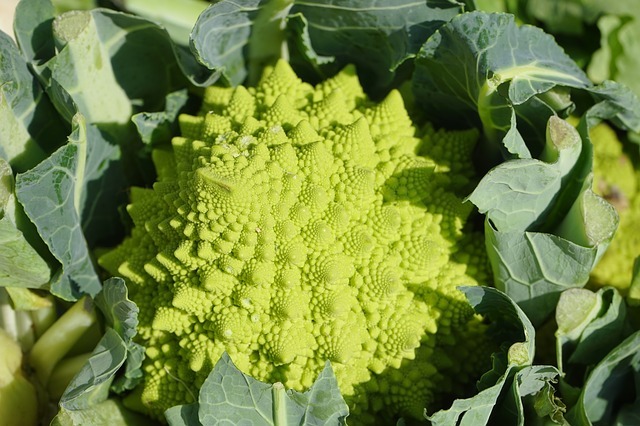Have you ever thought about the patterns observed in nature? If you carefully notice, the number of petals in any flower, the number of fingers we have, or even the arrangement of the sunflower seeds, all follow a certain pattern.
The proportions we see therein can be described using a unique ratio known as the "golden ratio." The famous Fibonacci sequence approximates the golden ratio. Let’s find out more about it!

What is the Fibonacci sequence?
1. The history:
The Italian mathematician Leonardo of Pisa, later known as Fibonacci, gives his name to the Fibonacci numbers. In his book Liber Abaci, Fibonacci introduced the sequence to Western European mathematics. However, ancient Sanskrit texts that used the Hindu-Arabic numeral system, prove that it was known much before that.
2. The mathematics:
In mathematics, the Fibonacci numbers commonly denoted Fn, form a never-ending sequence, called the Fibonacci sequence. In the sequence, each number is simply the sum of the two preceding numbers, starting from 0 and 1.
The Fibonacci sequence is:
0, 1, 1, 2, 3, 5, 8, 13, 21, 34, …
Adding the two preceding numbers (1+1) gives us 2, (1+2) gives us 3, (2+3) gives us 5, and so on. The ratio of the adjacent numbers consistently comes out to be ~1.618, represented by the Greek letter phi, Φ.
3. The golden ratio in nature:
The golden ratio is also sometimes known as the divine proportion because it is commonly found in so many things in nature. Common examples are the branching of trees, arrangement of leaves on a stem, the number of petals on a flower, the fruitlets of a pineapple, the seeds of sunflowers, the human ear and the family tree of honeybees.

4. The golden ratio in architecture:
Ancient Greek architecture used the golden ratio to create pleasing building designs. The dimensions of the buildings or structures related the width and height using the golden ratio.
To quote some more examples, the Great Pyramid of Egypt, the Parthenon in Greece, the Notre Dame in France and the Taj Mahal in India are also structures that have been found to use the golden ratio. However, it cannot be proven that they were intended to be built that way.

The golden ratio is just one of the many interesting concepts we have in maths.
Would you like to further explore the world of maths and science? Stay tuned for our next blog.
FAQ: Golden Ratio
It is often represented by the Greek letter φ (phi), is a mathematical constant that appears in various aspects of art, architecture, and nature. It is approximately equal to 1.6180339887.
Three important points about the golden ratio:
1. Mathematical Definition: It is defined as a number that can be obtained by dividing a line into two parts, where the ratio of the whole line to the longer part is the same as the ratio of the longer part to the shorter part.
2. Mathematical Representation: It is often denoted by the Greek letter φ (phi) and can be expressed as (1 + √5) / 2 or approximately 1.6180339887.
3. Aesthetic Significance: It is believed to have aesthetic and harmonious properties, and it has been used in art and architecture for centuries to create visually pleasing proportions.
It can be observed in various natural phenomena, showcasing its prevalence in the natural world.
Three important points about the presence of the golden ratio in nature:
1. Phyllotaxis: In plants, the arrangement of leaves, seeds, or petals often follows a spiral pattern with a golden ratio proportion. For example, pinecones and sunflowers exhibit such spirals.
2. Shell Spirals: Many seashells, like the nautilus, have shells that form spiral patterns with proportions close to it.
3. Human Body: Some believe that the proportions of the human body, such as the relative lengths of body segments, exhibit ratios close to it. However, this concept remains a topic of debate among scientists.
It has been a source of inspiration for artists and architects for centuries, influencing their creative works.
Three important points about the use of the golden ratio in art and architecture:
1. Architectural Proportions: Architects have incorporated it into building designs, including the Parthenon in Athens and the Notre-Dame Cathedral in Paris, to create aesthetically pleasing proportions.
2. Visual Composition: Artists, particularly in the Renaissance period, used it to guide the composition of their paintings, arranging elements in a way that is visually appealing and balanced.
3. Modern Design: Even in modern design and photography, it continues to be used to create balanced and aesthetically pleasing visual compositions.
The idea of the golden ratio as a universal concept of beauty has been a subject of debate and remains somewhat subjective.
Three important points about the concept of the golden ratio as a universal standard of beauty:
1. Cultural Variability: Ideas of beauty and aesthetics can vary across cultures and time periods, so what is considered beautiful is often subjective.
2. Historical Influence: It has influenced artistic and architectural standards of beauty in certain historical periods, particularly in the West during the Renaissance.
3. Debate Among Experts: There is no consensus among experts in the fields of mathematics, art, and aesthetics regarding the golden ratio's universal applicability as a standard of beauty.
Beyond its influence in art and nature, it finds practical applications in various fields.
Three important points about practical applications of the golden ratio:
1. Design and Layout: Graphic designers and web developers use it to create visually pleasing layouts for websites, advertisements, and printed materials.
2. Photography: Photographers often use it to frame their shots, creating well-balanced and aesthetically pleasing compositions.
3. Finance and Investment: In the financial world, it is used in technical analysis to identify potential points of price reversal in financial markets.
In conclusion, it is a mathematical concept with a rich history of influence in art, architecture, and nature. While it has inspired many creative works, its status as a universal concept of beauty remains a subject of debate. Practical applications in various fields demonstrate the enduring significance of this mathematical constant in contemporary society.

